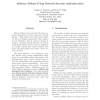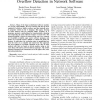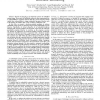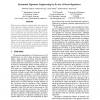58 search results - page 7 / 12 » Methods for the prevention, detection and removal of softwar... |
IWIA
2005
IEEE
14 years 29 days ago
2005
IEEE
Malware defenses have primarily relied upon intrusion fingerprints to detect suspicious network behavior. While effective for discovering computers that are already compromised,...
SAC
2010
ACM
14 years 2 months ago
2010
ACM
Hosts infected with malicious software, so called malware, are ubiquitous in today’s computer networks. The means whereby malware can infiltrate a network are manifold and rang...
COMSWARE
2006
IEEE
14 years 1 months ago
2006
IEEE
Many of the bugs in distributed software modules are security vulnerabilities, the most common and also the most exploited of which are buffer overflows and they typically arise in...
DATE
2005
IEEE
14 years 1 months ago
2005
IEEE
— Security is emerging as an important concern in embedded system design. The security of embedded systems is often compromised due to vulnerabilities in “trusted” software t...
ACSAC
2008
IEEE
14 years 1 months ago
2008
IEEE
Most intrusion detection systems apply the misuse detection approach. Misuse detection compares recorded audit data with predefined patterns denoted as signatures. A signature is ...




